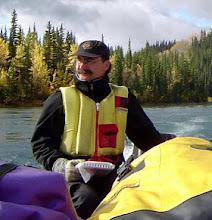One of the charms of New Zealand hiking is the notion of a walk. Back in the Yukon a hike follows a route, sometimes there's a good trail, sometimes there's a rough track and sometimes there's just a thrash through the bush. In New Zealand you can probably do all of these, but everyone goes on a walk. A walk includes a cabin or shelter every night, no need to carry a tent, and then there are options; a shop or even prepared meals and carriage of your pack to the next camp. It's not hard core physical demands, but it sure broadens the audience for hiking.
The Banks Peninsula Walk near Christchurch is a four day experience established by a group of sheep farmers looking to supplement their income with tourism. A beautiful tramp along some of the most dramatic sea coast in New Zealand, each day ends at a well maintained and fully equipped rustic house beside the ocean. The walk reflects the past two hundred years of human interaction with the ecology of Aotearoa.
The hike begins with a steep climb amongst sheep paddocks. All the trees were cut down by the pioneering white settlers. The stumps of the monstrous rimu trees - the hardy durable wood whoch once covered large areas of the island - are still fixed in the land some 160 years later, and even tree trunks, too big to be moved, remain slowly wasting away on the hillside. Further up we pass the grown over concrete foundations and scattered wooden fragments of Paradise, a family operated creamery and cheese factory last working before the First World War. Now there are sheep, pasture and rugged stone outcrops.
At Flea Bay we meet Francis Helps, who, with his wife Shireen, have turned a large portion of their land and family energies to the preservation of the largest little penguin colony in New Zealand. In the evening, as the penguins raft out in the cove, we tour through steep slopes containing hundreds of burrows (used during the moulting period), many built and placed by the family and volunteers. To learn more about their work visit http://www.pohatu.co.nz/penguin-tours.wse
The little museum at Stony Bay has photos of the stone crusher that spent a summer in the 1950s chewing up the beach cobbles to make gravel for the road finally connecting the farm to the outside world. Until this time these remote bays shipped out their produce, wool and mutton, and brought in groceries, school work and farm supplies with row boats slipping through the breakers on the beach. The hiker accommodation here is a delight of rusticity, the shower is set in the trunk of an old tree, the cabins nestled into the woods, our own included an apartment for a moulting penguin.
At Parakákáriki we eat our lunch on the high cliff top location of a Maori Pá, a fortress overrun and destroyed by a North Island group in the seventeenth century. On our last day we left behind the magnificent paradise beach of Otānerto Bay and walked up through the Hinewai Reserve, a private foundation which has purchased some 1300 hectares in the valley and is dedicated to the protection and restoration of native flora and fauna. Through the entire hike we saw the traps and poison baits to limit the introduced predators that have devastated New Zealand's endemic species.
The Banks Peninsula Track offers a terrific view of New Zealand. The land traversed speaks clearly about the people, forests and animals that have lived there over the past 500 years.
Banks Peninsula Track website: http://bankstrack.co.nz/index.html




No comments:
Post a Comment